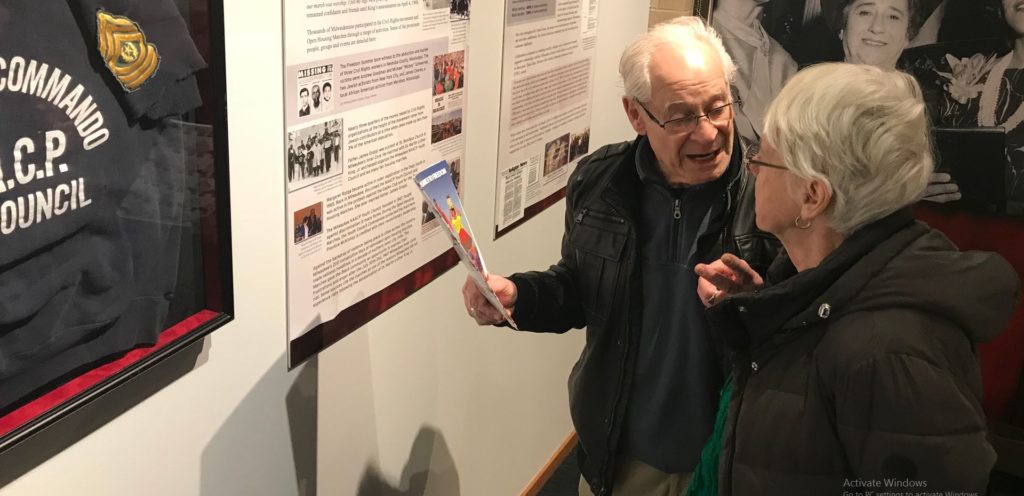MILWAUKEE – Prentice McKinney’s job was to protect the marchers.
In 1967 and 1968, members of the Milwaukee chapter of the National Association for the Advancement of Colored People’s Youth Council wanted to show the impact of housing discrimination in the city. Alderwoman Vel Phillips — the first black member of the Milwaukee Common Council — had been trying to ban housing discrimination since 1962 to no avail.
So the Youth Council organized a march from the predominantly black part of the city to the predominantly white part of the city.
McKinney was a leader of the Commandos, a security unit of the Youth Council. “We were constantly in court because we were direct action, meaning that we were going to take it on, even though we were nonviolent,” McKinney told a standing-room only crowd at Milwaukee Jewish Federation’s Jewish Museum Milwaukee, 1360 N. Prospect Ave., on Jan. 18. It was the opening preview of the museum’s new exhibit, “Allied in the Fight: Jews, Blacks and the Struggle for Civil Rights.” The exhibit explores the relationship between the black and Jewish communities in fighting racism.
“Our job was to make sure that the police and the counter demonstrators never came into contact with those people that were marching,” McKinney said. “If that meant we went to jail, we’d go to jail.”
The exhibit coincides with a city-wide initiative to commemorate the 50th anniversary of the marches, which took place over 200 consecutive days in support of the fair housing bill.
During that time, McKinney said, the marchers never questioned whether they had the support of the Jewish community. The Milwaukee Jewish Council and the Wisconsin Council of Rabbis publicly supported open housing, according to the exhibit. The Jewish community stepped up, McKinney said, to feed the marchers, help with transportation and bond people out of jail.
The exhibit, which runs through March 25, features information and artifacts from the era, such as a Commando uniform like the one McKinney wore.
Visitors can study a 1938 residential security map showing “redlining” throughout Milwaukee County. The term stems from a system created after the Great Depression that was put in place to evaluate the riskiness of mortgages. Redlined neighborhoods were deemed risky for lending. Some areas were redlined because of their residents, such as blacks and Jews, Reggie Jackson, of America’s Black Holocaust Museum, told WUWM. The museum is hosting a three-part series on redlining as part of the exhibit.
A timeline in the display chronicles the open housing marches, explaining how the Haymarket neighborhood came to be inhabited by the Jewish community, then the black community. It tracks events, including the marches, to May 10, 1968, when the open housing ordinance took effect.
Although the exhibit aims to educate people about the battles fought decades ago, it also calls visitors to action. A poster titled “Advances & Adversity: The Continued Struggle” addresses history since the marches. Collaboration between the black and Jewish communities declined after the demonstrations, but remains needed, the poster states.
“Collaboration is essential to combating hostility,” it reads. “Dialogue can be fostered and mutually supportive relationships fortified.”
* * *
Museum exhibit
“Allied in the Fight: Jews, Blacks and the Struggle for Civil Rights” is an exhibit at Jewish Museum Milwaukee through March 25. The museum is at 1360 N. Prospect Ave. 414-390-5730. JewishMuseumMilwaukee.org. Museum admission: Adults $7; seniors $6; students $4; children age 6 and under are free; active duty military are free. Free community days on Feb. 15, 18 and March 4.


